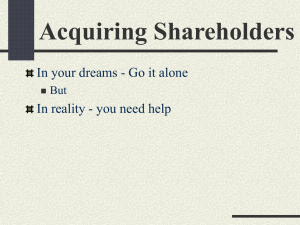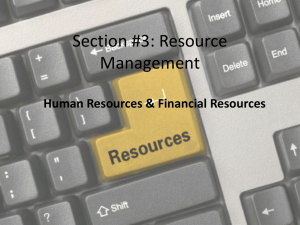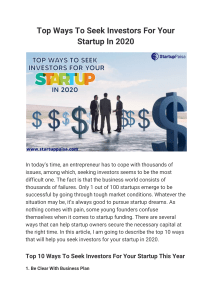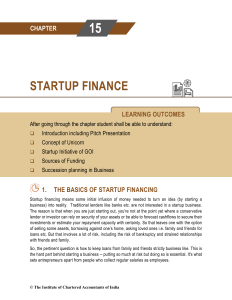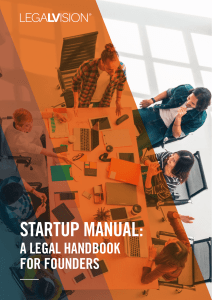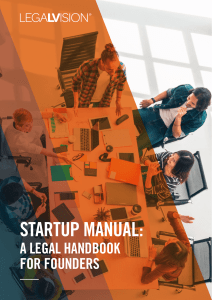+ Research and Development Financial tools to support start-up growth
advertisement
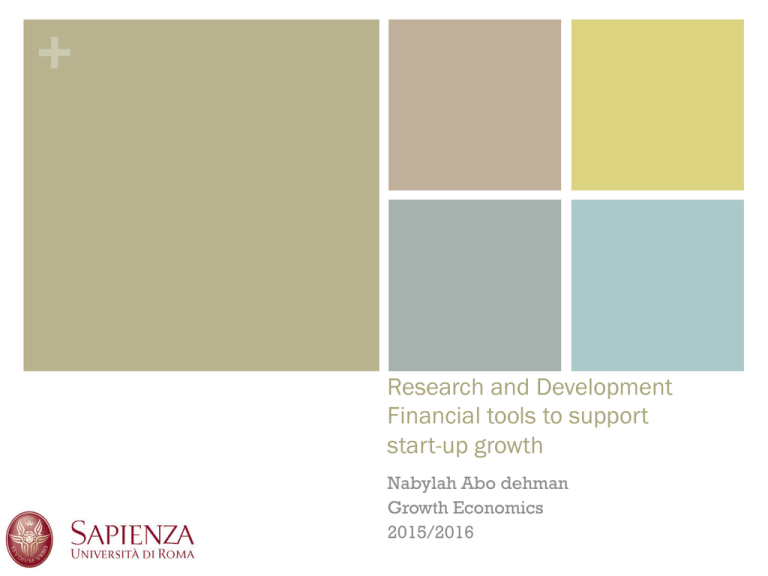
+ Research and Development Financial tools to support start-up growth Nabylah Abo dehman Growth Economics 2015/2016 + Research & Development • Investigative activities that a business or the government chooses to conduct with the intention of making a discovery that can either lead to the development of new products or procedures, or to improvement of existing products or procedures • Most investments in R&D are made by the private sector, public and/or governmental bodies, and universities • It is one of the means by which business can experience future growth by developing new products or processes to improve and expand their operations – or by which a State can improve its country’s economic development and growth • On average, most companies spend only a small percentage of their revenue on R&D (usually under 5%). However, pharmaceuticals, and software companies tend to spend quite a bit more • Countries’ commitment to R&D (both public and private) has more often than not been correlated to economic growth (EU 2020 objective of 3% of GDP to be invested in R&D is considered likely to boost EU competitiveness) + R&D and Innovation When a State, a company or a person conducts R&D, whether to create a new product or service or update an existing one, the desired end result is always innovation Innovation is value creation in the sense that it converts research into economic value and creation of specialized jobs “Capitalism is based on a process of continuous revolution based on technological innovation through phases in which new structures emerge and old ones are destroyed. This process of 'creative destruction' is the fundamental fact of capitalism” Joseph Schumpeter + Innovation ü Constitutes a discontinuity in traditional knowledge, and know-how. This discontinuity increases overall productivity and labour productivity: with the same amount of resources, we can produce more goods (development) or with less resources we can produce the same amount of goods (sustainability) ü Development and sustainability are linked to technology diffusion, production processes, and quality of life (income increase or more spare time) and to the environment (improved usage of finite resources) According to modernism, innovation is novelty, it is in rupture with the past. However, in the case of sustainable innovation, sometimes the best innovation will be a rediscovery, a re-elaboration of the past (creative development rather than creative destruction) a sort of conservative innovation: a challenge to human creativity in re-elaborating things we have been doing forever but in drastically changed circumstances + Startup A startup is a company just beginning to develop Usually small and initially financed and operated by a handful of founders or one individual Offering a product/a service not currently being offered elsewhere in the market, or that is being offered in an inferior manner In the early stages: • Startup companies’ expenses tend to exceed their revenues as they work on developing, testing and marketing their idea As such they require financing • They may be funded by traditional small-business loans (from banks or credit unions), by government-sponsored small business administration loans from local banks, or by grants from non-profit organization and state governments. Incubators can also provide startups with both capital and advice while friends/family may offer loans or gifts + Financing startup companies’ growth Startups – as newly born companies or ventures with limited operating history – lack access to capital markets and thus to traditional source of financing. Furthermore they cannot raise funds by issuing debts. R I S K «Lab-pure» Research Base Research Market Test 100% financed by Public Institutions ( Incentives, contributions, scholarships,…) Applied Research Patents and Licences Prototype Private-public sector partnership (Equity Capital, Loans, guarantees) Produce and Put the innovative product on the market Venture Capital Hi-tech investments (Private sector) Risk High Medium Low + Stages of startups’ financing resources • Pre-seed financing: typically involved in the analysis and evaluation of the idea • Seed financing: It intervenes in the testing phase of the innovative idea. The idea is often channeled into paths of incubation to determine the product, the technical validity and the target market • Start up financing: It occurs at an advanced stage of the idea. The idea became a prototype that must be checked for commercial validity + Venture Capital • It is part of the class of alternative assets that have been developing in the last decade to complement investor’s traditional portfolios (as VC is uncorrelated to the market) • Most VC come from group of wealthy investors, investment banks and other financial institutions that pool such investments and partnership • It is the money provided by investors to startup firms and small businesses with perceived long-term growth potential • The potential for higher returns compensate higher risks such as illiquidity, uncertainty of expected growth and other risks due to the small size of each company • It can also include managerial and technical expertise • The downside for entrepreneurs is that venture capitalists usually get a say in the company’s decision in addition to a portion of the equity + Business Angels • Non-institutional investors also called angel investors (often individuals with considerable financial resources) that provide new-born startups and microenterprises with either direct investment, managerial support or both • They give more favorable terms than other investors/lenders • They provide startups with investment at an early stage – which could be considered as a bet • Notwithstanding a strong risk attitude, they take a limited equity capital investment in companies with high growth potential and they provide important management and financial consulting + Conclusions Spin-offs and start-ups are the best way to create value from applied research and to diffuse innovation. In order to favour such a process we need: ü Support activities (e.g.: how to incorporate a company, how to manage it, market analysis, business plan, procedure quality control, patenting) ü Laboratories and offices (Innovation parks) ü Coordination with selected partners in the homecountry and abroad ü Preferential credit lines for research and innovation activities

